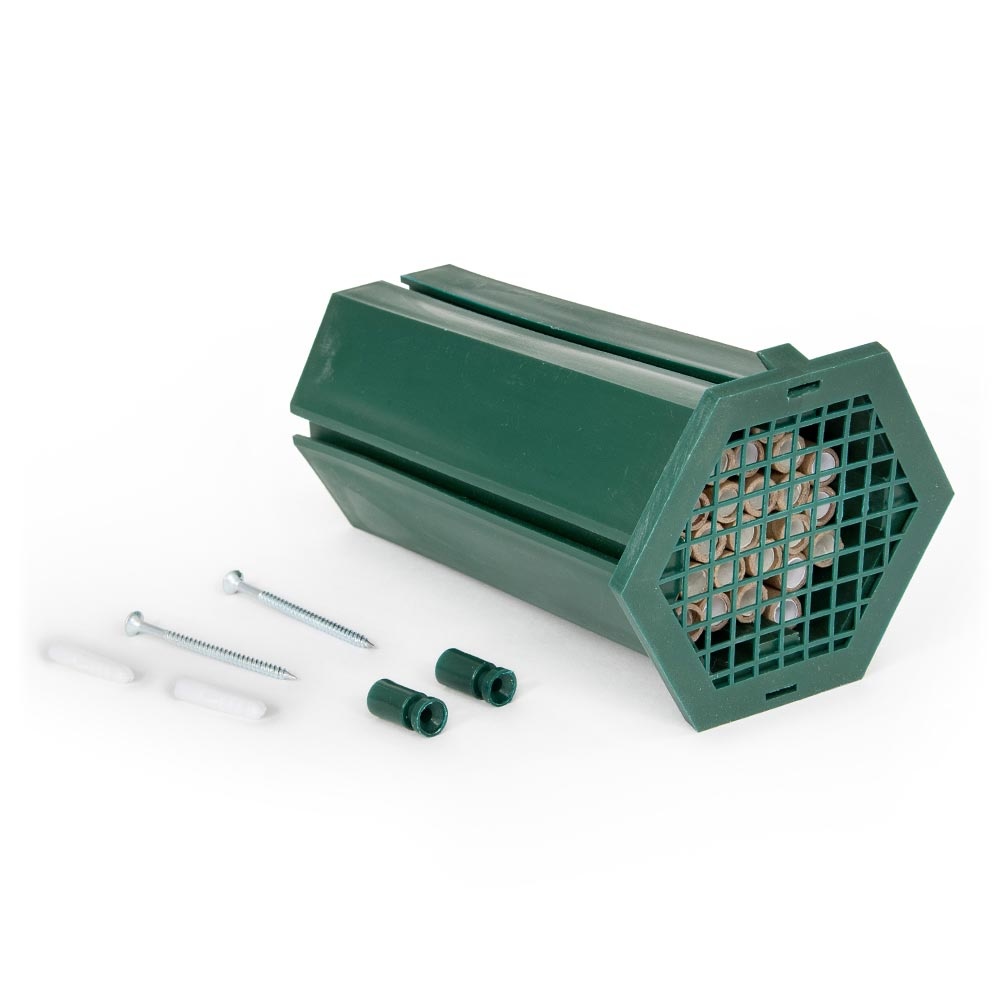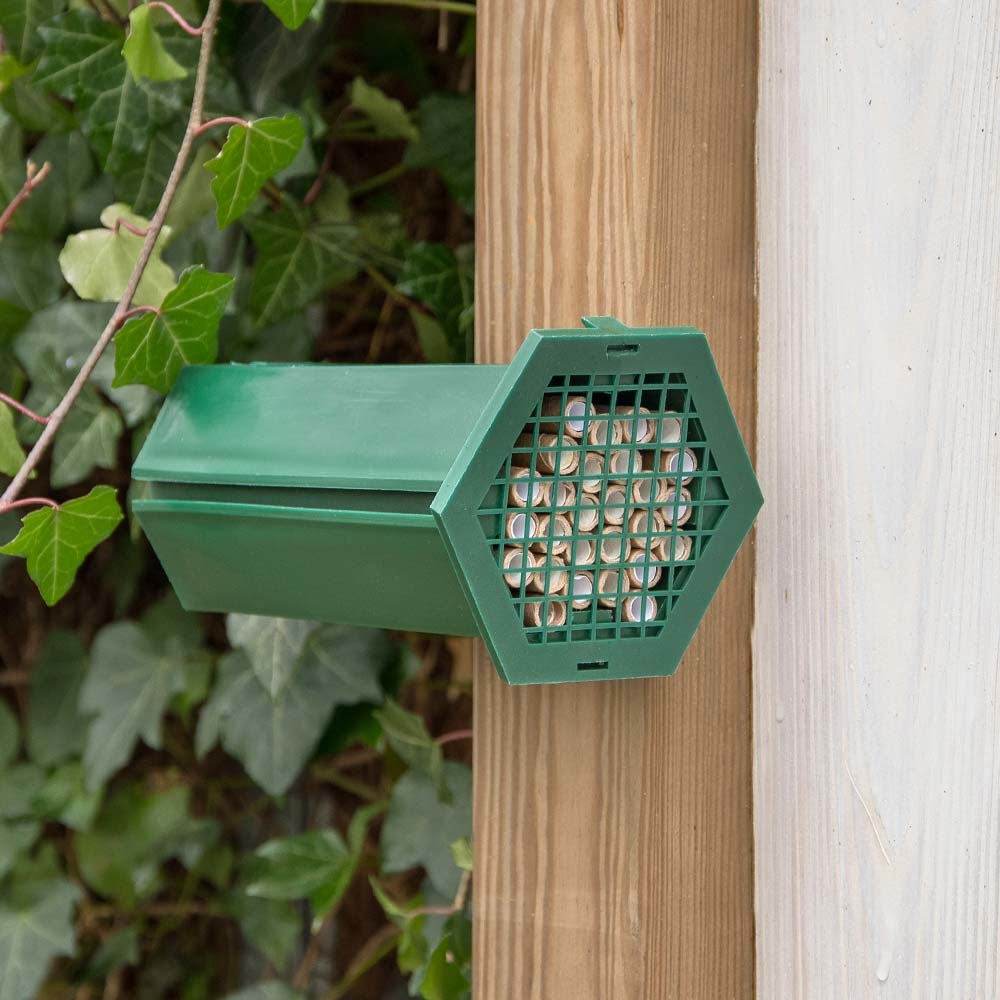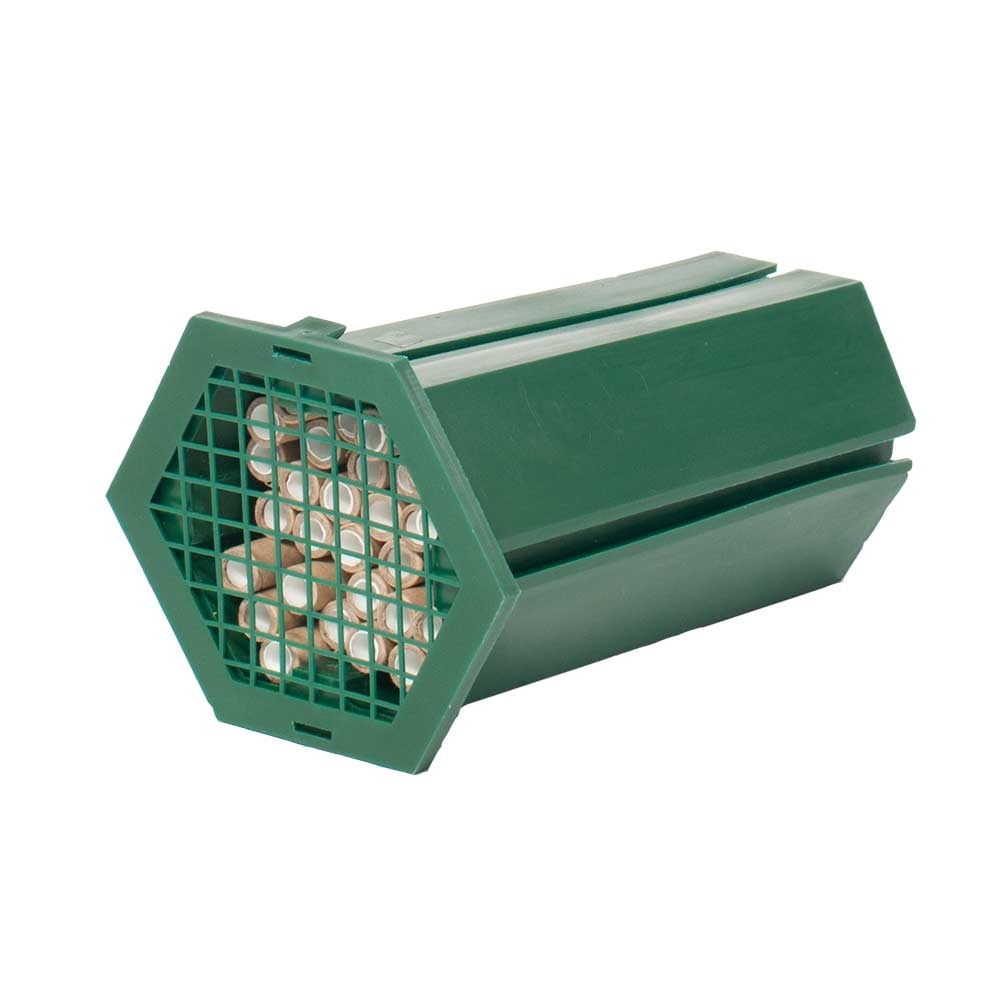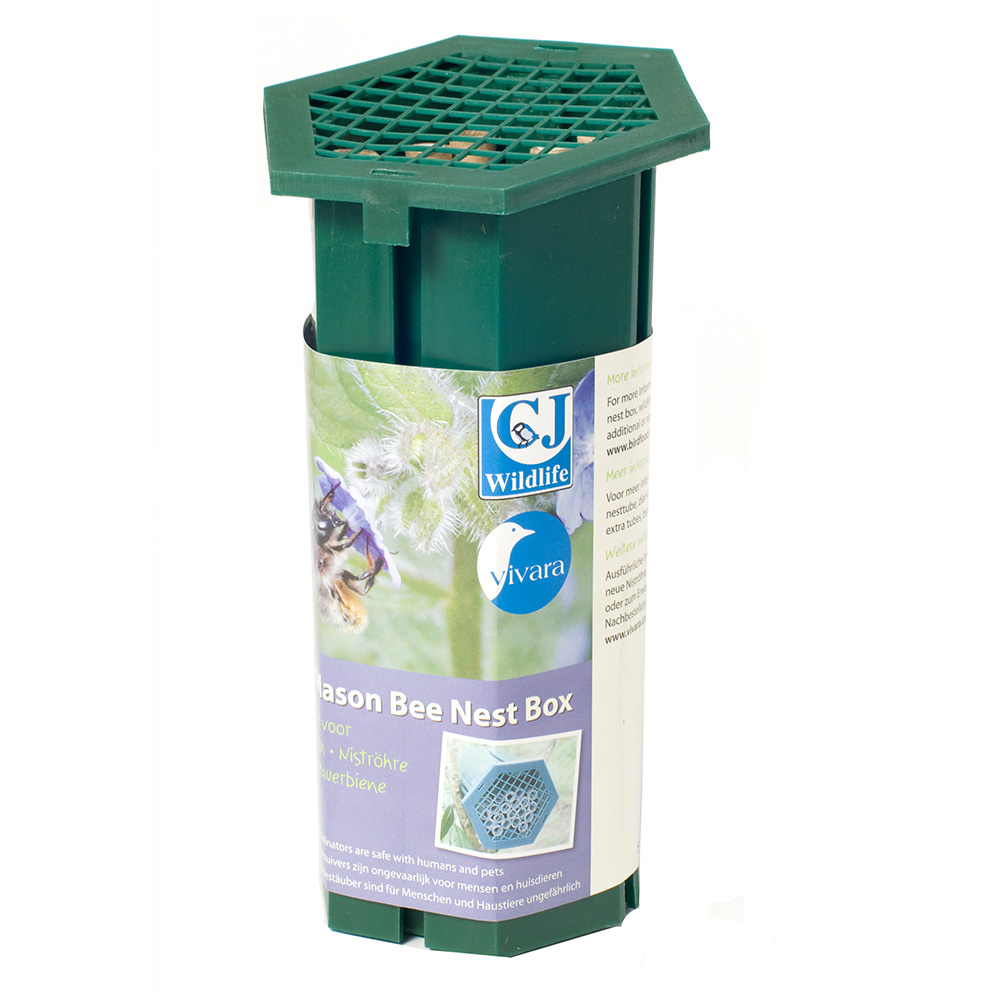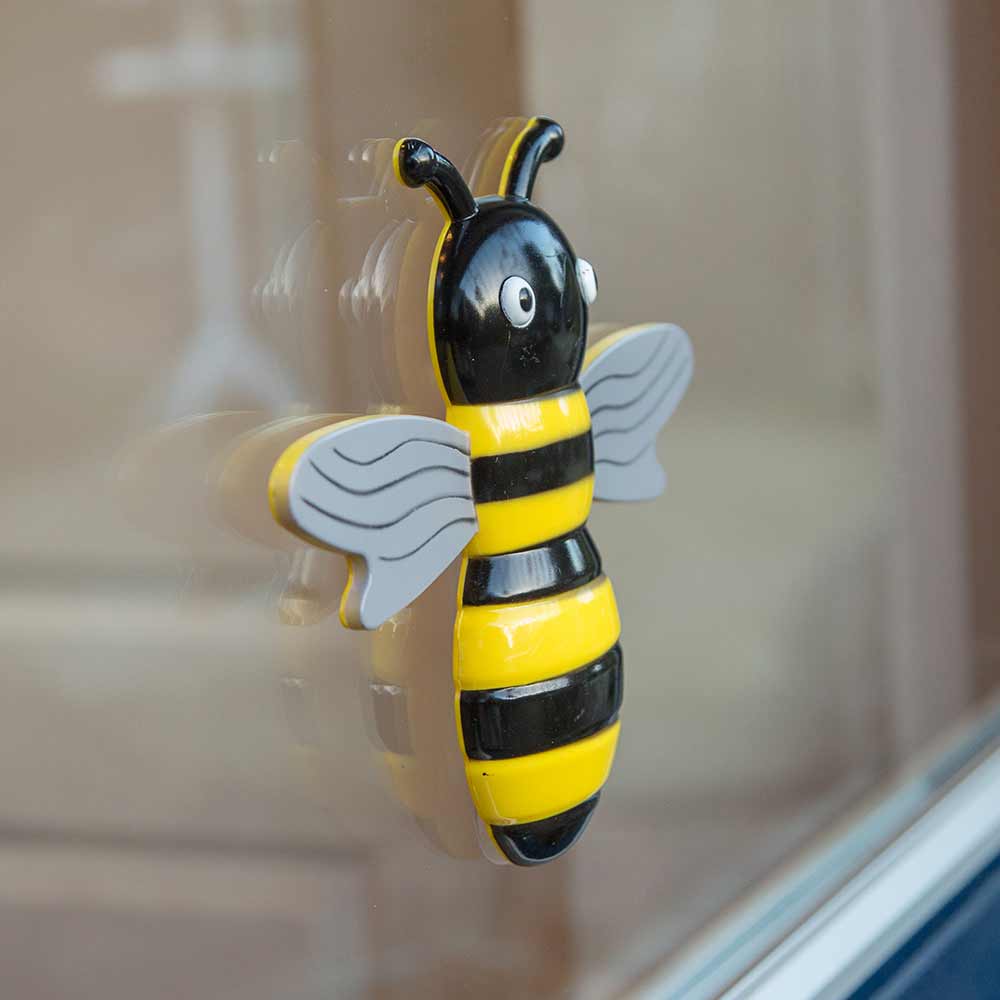Red Mason Solitary Bee Nest Box
Mason Bees are docile and safe with children and pets. They are excellent pollinators of fruit trees, raspberries and early strawberries and are fond of a range of flowers and tree blossom.
This nest box is supplied with 29 individual tubes, 2 sets of screws and plugs for mounting and full instructions for siting your new box and caring for bees.
Nesting
Once a female has chosen a nest, she will return laden with yellow pollen carried on the dense hairs on the underside of her body. Occasionally you will see her carrying a pellet of mud to the nest between her jaws and braced against the horns on the front of her head; this is a clear indicator that the female is laying eggs within the nest tube. Each tube holds up to 10 cells. Each cell has its own store of pollen for the growth and development of the larva inside and is separated from its neighbours by a wall of mud. The appearance of a "mud plug" at the entrance to the tube indicates a completed nest. The females will continue this nesting process until the end of June or early July.
Development
In late July or early August, the fully grown larva will spin a tough, brownish silk cocoon and will pupate. By Mid September it will have developed into an adult Mason Bee but will remain in the cocoon over winter.
Overwintering
You can help increase the survival rate of the newly formed adult bees by putting any occupied tubes in an unheated shed, garage or outhouse from late September. Leave these undisturbed for the winter and return to the garden early the following March.
Emerging in Spring
In early spring, the adult bees will begin to emerge from the tubes. As the eggs are laid back to front in the tubes by the females, the bee at the far end of the tube is the oldest and first to be ready to emerge in late March-early April. This bee will begin to bite through the mud partition which will awaken the slightly younger bee in front. This process continues until all adult bees have emerged from the tubes. These newly fledged bees will then begin searching for a nesting site and mate, and so the process starts again.
There are other ways to help Mason Bees. You can grow nectar rich, wildlife friendly plants in your garden which will be an ideal food source for Mason Bees.
- Brand
- CJ Wildlife
- Width
- 97 mm
- Height
- 186 mm
- Length
- 89 mm
- Suitable Wildlife
- Bee
- Material
- Plastic
- Colour
- Green


